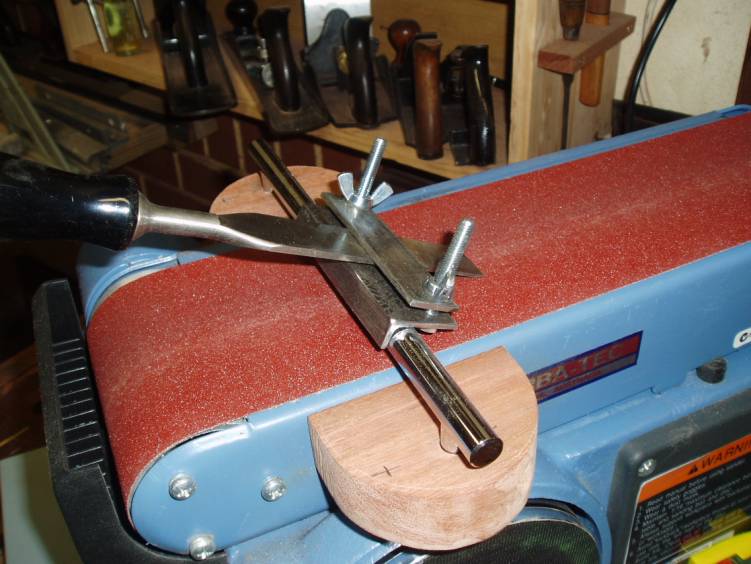Jacob
What goes around comes around.
The best way to use a belt sander is to use it freehand to grind and then finish on an oil stone. No jigs needed in either case.Dennis and Roger raise the topic of small belt sanders. This open us to an interesting question.
Belt sanders can do an excellent job of preparing a primary bevel. FWW mag posted an jig I built 10 years ago (although I have not used it much over the past several years) ...

http://www.inthewoodshop.com/WoodworkTe ... erMkI.html
One now has three choices: (1) freehand on the resulting flat primary bevel, which is very inefficient (unless you are honing a laminated blade) (2) add a secondary bevel with a guide, or (3) add a secondary bevel freehand.
Now the question is, which produces the better edge - one freehanded or one via a honing guide?
Regards from Perth
Derek
You've gone to an enormous amount of trouble there Derek - I can't quite see the point. What is stopping you just holding the chisel at that angle, in one hand even?






























